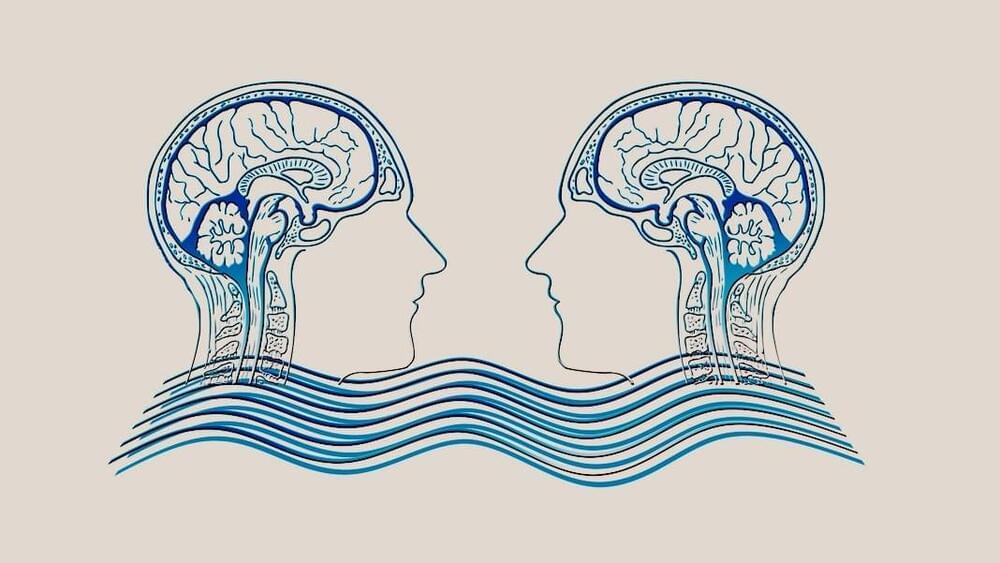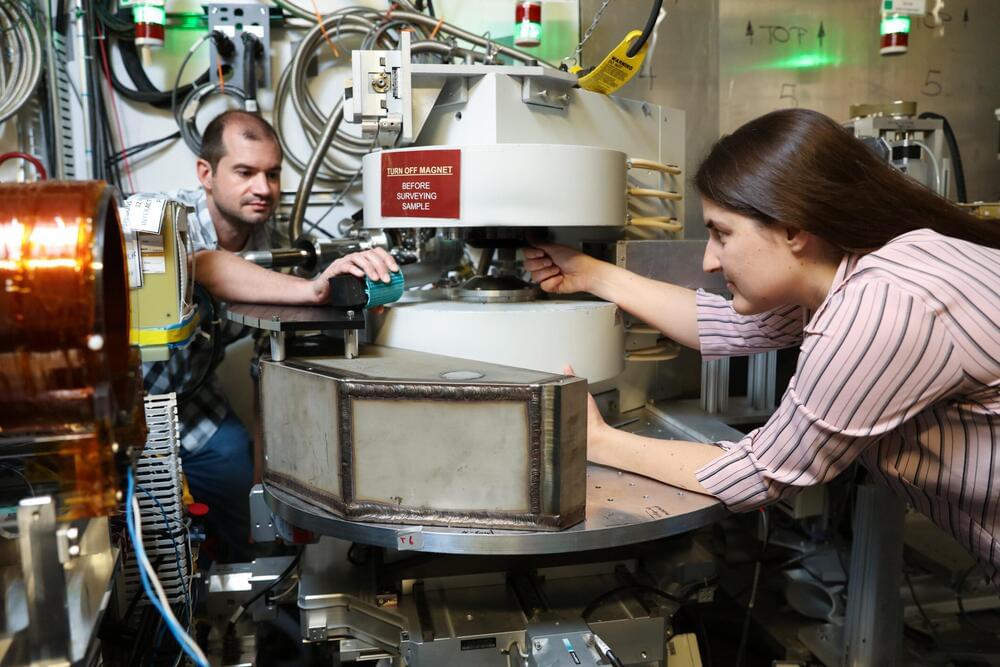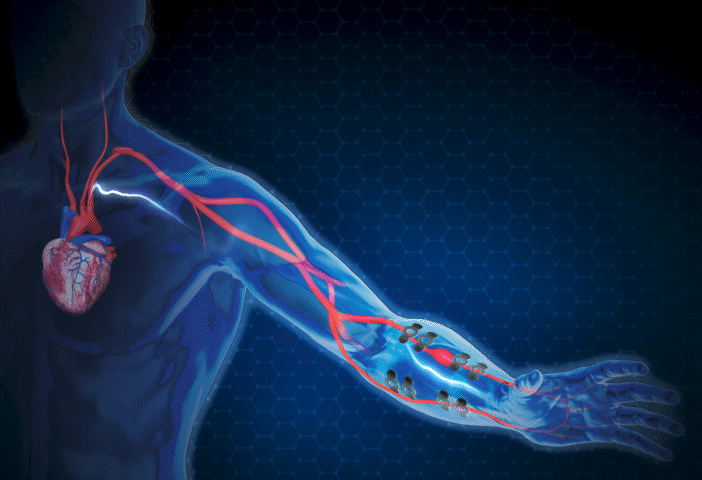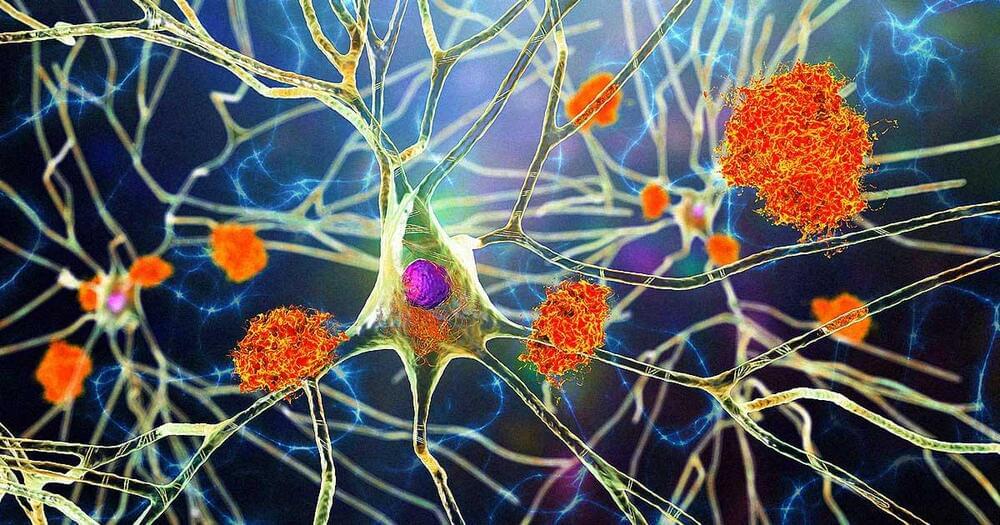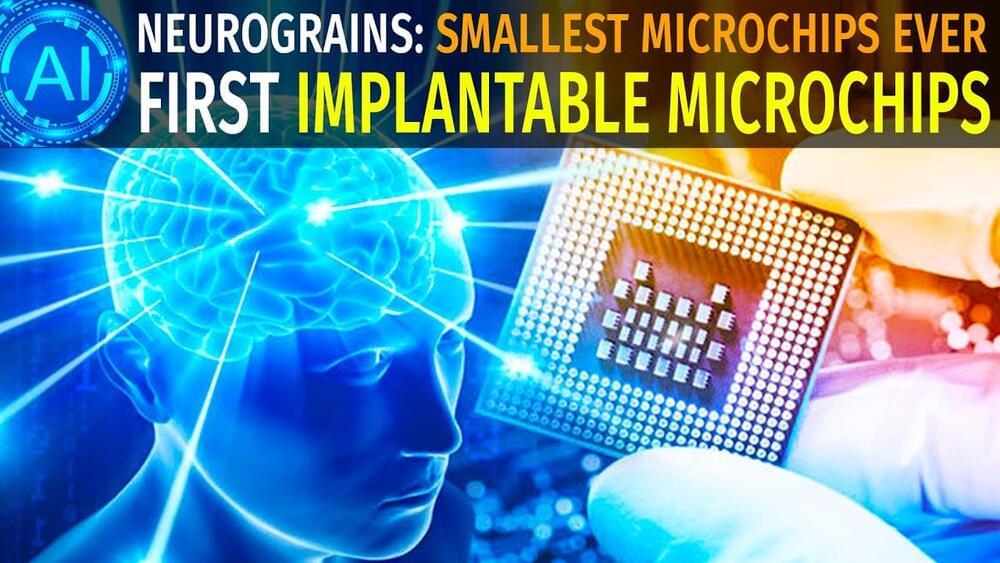The mission proposal calls for nuclear fission power. Breakthroughs would boost China’s overall exploration capabilities.
One of the largest comets known is approaching our planet on the only trip through the inner solar system it will make during our lifetimes.
Five years ago, the Hubble Space Telescope spotted a large comet at the farthest distance ever, as it was approaching the sun from way out between the orbits of Saturn and Uranus. Now, that giant space snowball is coming in for its closest pass by Earth in just a few weeks.
Comet C/2017 K2 will be at its nearest point to us on its current swing through the inner solar system on July 14. Even at its closest, however, it will still be farther away from us than the average distance between Earth and Mars. This will likely make it difficult to see the comet without at least a small telescope, despite its substantial stature.
If you need the hardware.
A separate study used metasurfaces as a telephone of sorts to help two people text simple messages, all without lifting a finger.
Direct brain-to-brain communication isn’t new. Previous studies using non-invasive setups had participants playing 20 questions with their brain waves. Another study built a BrainNet for three volunteers, allowing them to play a Tetris-like game using brainwaves alone. The conduit for those mindmelds relied on cables and the internet. One new study asked if metasurfaces could do the same.
Led by Dr. Tie Jun Cui at the Institute of Electromagnetic Space, Southeast University in China, the study linked a well-known brainwave signal, P300, to the properties of a metasurface. Their setup, electromagnetic brain-computer-metasurface (EBCM), used brainwaves to control a particular type of metasurface known as an information metasurface, which can code 0s and 1s like an electronic circuit board.
Aging binary systems could be giving birth to second-generation planets.
When a Sun-like star exhausts the helium fuel in its core, it enters its death throes. Starved for fuel, it swells to a red giant, likely swallowing its innermost planets, and begins burning scraps of leftover hydrogen to helium. Periodically, these helium ashes reignite, causing the star to once again burn brightly and throw off its outer layers into space.
This volatile phase of stellar life is called the asymptotic giant branch (AGB). With so much happening, it would seem like a terrible environment for the delicate process of forming planets. But over the past couple decades, astronomers have begun to suspect that under some circumstances, this stage could result in a new disk of material surrounding the star, giving rise to a second generation of planets.
Now, an analysis published Feb. 1 in Astronomy and Astrophysics gives some of the first observational hints that dying stars in binary systems could be giving birth to new planets. Roughly 10 percent of the post-AGB stars they studied are surrounded by disks of gas and dust that have gaps and cavities in them, a telltale sign that planets are possibly present — or forming — in them.
To solve a long-standing puzzle about how long a neutron can “live” outside an atomic nucleus, physicists entertained a wild but testable theory positing the existence of a right-handed version of our left-handed universe. They designed a mind-bending experiment at the Department of Energy’s Oak Ridge National Laboratory to try to detect a particle that has been speculated but not spotted. If found, the theorized “mirror neutron”—a dark-matter twin to the neutron—could explain a discrepancy between answers from two types of neutron lifetime experiments and provide the first observation of dark matter.
“Dark matter remains one of the most important and puzzling questions in science—clear evidence we don’t understand all matter in nature,” said ORNL’s Leah Broussard, who led the study published in Physical Review Letters.
Neutrons and protons make up an atom’s nucleus. However, they also can exist outside nuclei. Last year, using the Los Alamos Neutron Science Center, co-author Frank Gonzalez, now at ORNL, led the most precise measurement ever of how long free neutrons live before they decay, or turn into protons, electrons and anti-neutrinos. The answer—877.8 seconds, give or take 0.3 seconds, or a little under 15 minutes—hinted at a crack in the Standard Model of particle physics. That model describes the behavior of subatomic particles, such as the three quarks that make up a neutron. The flipping of quarks initiates neutron decay into protons.
Blood pressure is one of the most important indicators of heart health, but it’s tough to frequently and reliably measure outside of a clinical setting. For decades, cuff-based devices that constrict around the arm to give a reading have been the gold standard. But now, researchers at The University of Texas at Austin and Texas A&M University have developed an electronic tattoo that can be worn comfortably on the wrist for hours and deliver continuous blood pressure measurements at an accuracy level exceeding nearly all available options on the market today.
“Blood pressure is the most important vital sign you can measure, but the methods to do it outside of the clinic passively, without a cuff, are very limited,” said Deji Akinwande, a professor in the Department of Electrical and Computer Engineering at UT Austin and one of the co-leaders of the project, which is documented in a new paper published today in Nature Nanotechnology.
High blood pressure can lead to serious heart conditions if left untreated. It can be hard to capture with a traditional blood pressure check because that only measures a moment in time, a single data point.
In a surprise finding, researchers have found that getting at least one flu shot makes it 40 percent less likely for people over the age of 65 to be diagnosed with Alzheimer’s disease, up to four years later.
While it’s still far too early to determine if there are any direct causal links between the common vaccine and neurological health outcomes like Alzheimer’s — in other words, we don’t know if it’s the flu vaccine itself or something else responsible for the results — the research is certainly an eyebrow-raising new development that could, potentially, point in the direction of easily accessible treatments.
In a peer-reviewed study in the Journal of Alzheimer’s Disease, researchers at UTHealth Houston compared the incidence rate of the disease in patients with and without at least one flu vaccination in a nationwide sample of US adults aged 65 and up, which included 935,887 vaccinated and 935,887 non-vaccinated individuals.
Neurograins might be the future of implantable Brain Computer Interfaces due to their advantages in terms of abilities and safety in terms of implantation. Due to being the smallest Microchips ever made, in addition to being very powerful, they can make very high resolution recordings of brain activity and even stimulate areas in the brain for medical treatments for people suffering from brain disorders.
The field of neuroscience is developing at a rapid pace, which constantly improves on our BCI Technology and enabling more and more treatments and applications for Brain Computer Interface. It’s clear that this is very advanced future technology and who knows, maybe these new Neurograin Brain Computer Interfaces may play a part in it. Or maybe Elon Musk’s Neuralink’s approach will win in the end. People willingly microchipping their brains will be more common in the future.
–
If you enjoyed this video, please consider rating this video and subscribing to our channel for more frequent uploads. Thank you! smile
–
TIMESTAMPS:
00:00 The smallest Chips ever made?
01:48 How is it different?
02:47 How this Brain Computer Interface works.
03:51 What can this BCI do?
05:46 The Future of Brain Computer Interfaces.
08:30 Last Words.
–
#Neurograins #bci #neuralink
The preclinical drug works by inhibiting the kinase Cdk5 which is found in mature neurons. Cdk5 has long been linked to neuropsychiatric and neurodegenerative disorders, but prior inhibitors have largely failed to cross the blood-brain barrier and enter the brain.
A new preclinical drug reported by James Bibb, Ph.D., and colleagues has the potential to combat depression, brain injury, and cognitive disorders. The drug, which is notable for being brain-permeable, works by inhibiting the kinase enzyme Cdk5.
Cdk5 is an important signaling regulator in brain neurons. Over three decades of research, it has been linked to neuropsychiatric and degenerative disorders such as Alzheimer’s.


